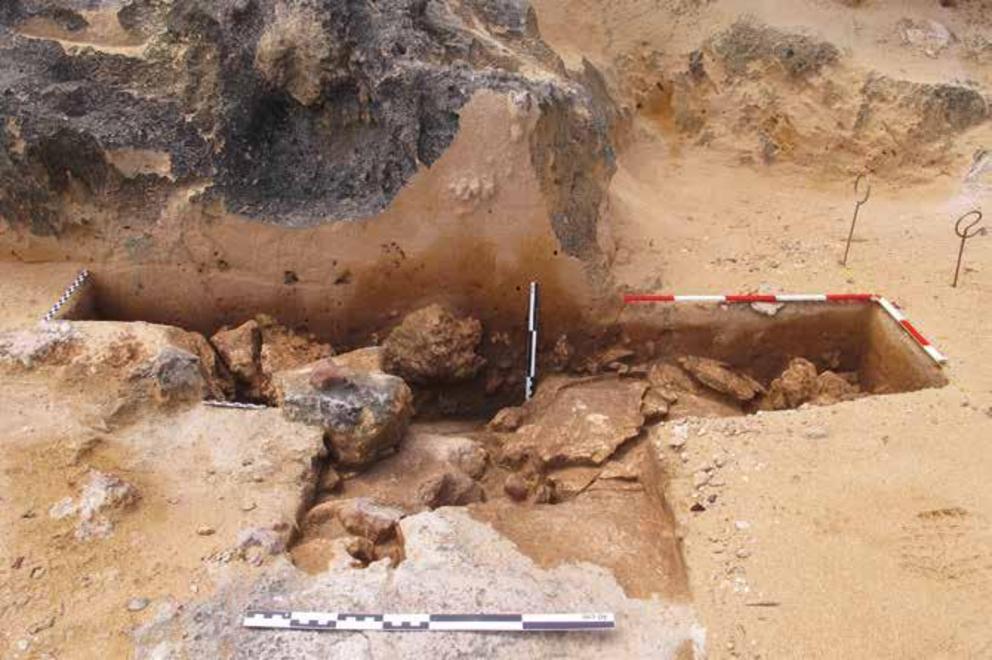Archaeology places humans in Australia 120,000-years-ago
Shell middens and a potential ancient hearth add to growing evidence of a much deeper human occupation period in Australasia (prehistoric Sahul).
A meticulously detailed 11 years research program has concluded that there is compelling evidence for a human presence 120,000 years at Moyjil, Point Richie, on the far south coast of Victoria.
 Excavation in basal calcrete at Moyjil containing burnt stones and charcoal. Image credit - Ian J. McNiven
Excavation in basal calcrete at Moyjil containing burnt stones and charcoal. Image credit - Ian J. McNiven
In the past, scientific research suggestive of human habitation in Australia up to 120,000 years ago had been considered and then rejected. Several habitation sites have produced discoveries pointing to a much earlier than expected period, but the controversy led to more conservative dating. The new finding should cause a rethinking of all relevant archaeological sites.
The new research findings have been presented to the Royal Society of Victoria by a group of highly respected academics including Prof Jim Bowler, famous for his discovery of the oldest well-dated human remains on the continent, Mungo Lady and Mungo Man (42,000 years old).
The Collaborative efforts included Archaeologist Professor Ian McNiven along with a number of his professional colleagues including; David Price, John Sherwood and Stephen Carey.
Analysis of a shell midden, already suspected to be 70 – 80 thousand years old, was carried out along with additional discoveries including charcoal and burnt stones with all the hallmarks of being an ancient aboriginal type cooking hearth.
Thermal luminescence dating techniques used on the blackened stones provided ages in the range of 100-130 thousand years, consistent with independent stratigraphic evidence and contemporaneous with the age of the surface in which they lie.
It is important to note that the scientists consider the distribution of the fire-darkened stones to be inconsistent with wildfire effects. Included were two hearth-like features closely adding further indications of potential human action at the site.
This dating at 120,000 years may sound astonishing but consider here that there has been growing evidence of a much earlier habitation period, including the discovery of tools at Madjedbebe, Arnhem Land (northern Australia) which produced dates of 65 – 80 thousand years.
For the rest of this article please use source link below
